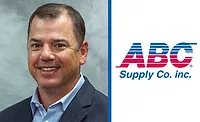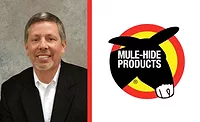Roofing Q&A
Roofing Industry Q&A: Spray Polyurethane Foam Alliance (SPFA)
Carbon footprint reporting requirements will be a challenge for spray foam.

Editor’s Note: Gauging the pulse of the roofing industry annually continues to be a challenge as roofers adapt to a rapidly changing marketplace. In addition to the survey circulated last fall that laid the foundation for the 2024 Roofing Report, RC also sought out the opinions of leaders from all segments of the industry.
As part of RC’s continuing coverage, here’s what Rick Duncan, executive director of Spray Polyurethane Foam Alliance (SPFA), shared with us.
RC: How would you characterize the state of the roofing industry in 2024?
RD: It has been consistent for our contractors. We have not seen an increase in the industry’s number of roofing contractors. However, the ones that are established seem to be doing well. Today, a lot of the projects out there do consist more of re-roofing and maintenance. Work in these areas has been steady.
RC: Are there any recent trends that you will continue to monitor this year?
RD: Yes definitely. What we are seeing in both roofing and insulation is there is an increased interest within the built environment in having a low carbon footprint for all building products. There will be increased requirements for reporting through life cycle assessments (LCAs) and environmental product declarations (EPDs) and there is even some discussion by the Department of Energy and the Environmental Protection Agency to mandate the reporting of carbon impact for products. These EPDs and LCAs they are asking the industry manufacturers to complete will focus on durability and maintainability of roofing systems. This is where we believe spray foam is going to do well as the products have a proven durability in severe weather events, including hurricanes and hail. They also don’t have to be replaced as often. Because of that, we can reduce the frequent replacement of the product, which makes it even more sustainable, lowering the carbon footprint of the roofing system over the lifetime of the building.
RC: Our annual survey of roofing contractors showed a lot of optimism in the marketplace. Why do you think that is, and do you share that viewpoint?
RD: From a sales perspective, there is some expectation in certain regions that roofing will pick up. For example, in Florida specifically, the building code is changing to mandate that if there is any roof over 15 years old that has weather-event related damage, the state will require that roof be removed and replaced, regardless of whether it can be repaired. And, while we don’t necessarily support a mandate like this, it will likely spur sales for new roofs. However, these sales will impact certain roof types, or material categories, more than others.
Spray foam roofs specifically are almost always low slope applications in commercial construction. Commercial construction is driven by demand for office and retail and there is unfortunately not a lot of either being built right now. Thus, I don’t see as much optimism on the low slope roofing side.
RC: What economic factors will play the biggest role in a roofing contractor’s success this year?
RD: Certainly, inflation increasing material costs will impact roofing contractors. We experienced some of that during the more recent material shortages which ended about a year ago. Because our products are petroleum based, if petroleum prices go up, we will unfortunately see increases in our material prices.
RC: What product categories or new technology are you most excited about in roofing?
RD: A lot of the innovation happening in roofing is occurring in the steep slope segment. That said, if demand for solar continues to excel in low slope roofing, this will bode well for the spray foam roofing sector as our products are well suited to pair with photovoltaic systems.
RC: How is your organization responding to the growing consolidation and private equity in roofing?
RD: As an industry trade association, we are adjusting to cater to a smaller number of systems houses. However, in spray foam, as these consolidations occur, new systems houses come into the marketplace. So, we often end up right back to catering to the same number of systems houses in the end.
RC: What are the biggest concerns moving forward?
RD: The carbon footprint reporting requirements for our products will be a challenge. While no regulations have been put into place yet, government agencies are now discussing how they want to handle this.
RC: What are you proudest of about your organization?
RD: I’m proudest of the growth that our organization has achieved over the past several years. We have been very successful in attracting a lot more contractors into our membership and community. We have also seen the interest and participation in our Professional Certification Program grow, which is great for everyone, including builders, contractors and customers.
RC: When is SprayFoam 2024, and what will roofing trade shows of the future look like?
RD: I do think that while some industry trade shows are going virtual we haven’t really seen much of that in construction and building products. I do think trade shows will continue to progress how they have been. The SPFA is also really optimistic about the expected turnout at the SprayFoam 2024 Convention & Expo, which is being held in Las Vegas March 3-6.
Looking for a reprint of this article?
From high-res PDFs to custom plaques, order your copy today!






